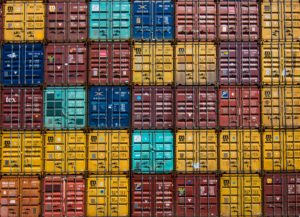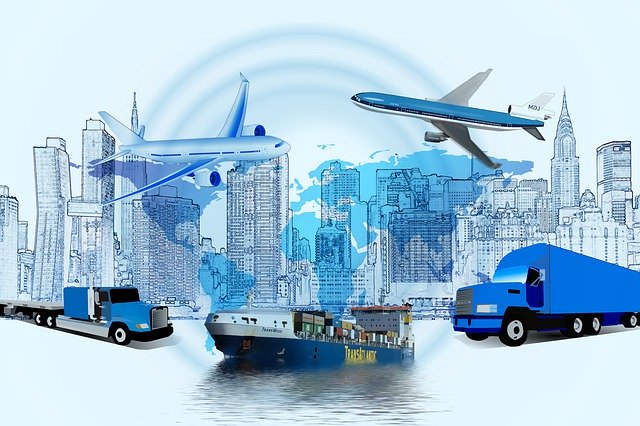 Disruptions due to the coronavirus pandemic (COVID-19) have brought to fore supply chain weaknesses in the Philippines, according to National Economic and Development Authority (NEDA) Undersecretary for Regional Development Group Adora Navarro in a presentation at the second Supply Chain Analytics Networks Hub E-Forum.
Disruptions due to the coronavirus pandemic (COVID-19) have brought to fore supply chain weaknesses in the Philippines, according to National Economic and Development Authority (NEDA) Undersecretary for Regional Development Group Adora Navarro in a presentation at the second Supply Chain Analytics Networks Hub E-Forum.
The weaknesses, said Navarro, are evidenced by eight chokepoints identified in a 2015 study on “Supply Chain Connectivity: Enhancing Participation in the Global Supply Chain” by Dr Epictetus Patalinghug: transparency, infrastructure, logistics capacity, clearance, documentation, connectivity, regulations and standards and transit.
She explained the pandemic has emphasized the lack of transparency or awareness of the full scope of the regulatory issues affecting logistics, as well as lack of awareness and coordination among government agencies on policies affecting the logistics sector. It also highlighted the absence of a single point or champion agency on logistics matters.
Inefficient or inadequate infrastructure, lack of cross-border physical linkages such as roads, bridges, and inter-island shipping routes, are chokepoints that Navarro said the government is trying to solve through the Build Build Build infrastructure program.
The lack of capacity of local or regional logistics providers, meanwhile, “became very evident due to the curtailment of the workforce” as a result of travel restrictions and social distancing requirements in quarantined areas.
There was also inefficient clearance at borders and “lack of coordination among border agencies, especially clearance of regulated goods at the border.”
Navarro said an example of this is quarantine control points or checkpoints. During the early days of community quarantine, there were numerous reports of truckers and delivery service providers not allowed to pass checkpoints despite a national government policy on unhampered movement of cargoes. To remedy the situation, Navarro noted the government put together an Authorized Persons Outside Residence list–a list of industries allowed to operate during the pandemic and which included logistics service providers–and created the RapidPass ID system for essential workers (including logistics service providers) to pass checkpoints unhampered.
Another chokepoint is procedures for documentation, including securing health-related clearances, when crossing local government unit borders that are under community quarantine.
In addition, the pandemic highlighted the country’s “underdeveloped multimodal transport capabilities, inefficient air, land, and multimodal connectivity”, which Navarro said the government is trying to solve through public investment programs and public-private partnership projects.
There were also variations in cross-border standards and regulations for movement of goods, services, and business travelers that “became apparent when local government units issued regulations that were stricter than what the IATF (Inter-agency Task Force for the Management of Emerging Infectious Disease) issued.”
Then too, there was a lack of a regional border customs transit arrangement “especially in the south where our borders with Malaysia and Indonesia are porous.” She noted an early case in the Bangsamoro Autonomous Region in Muslim Mindanao where there were persons able to return to the country after attending an event in Malaysia where a spike of COVID-19 cases were reported.
RELATED: Pre-COVID or under new normal, challenges the same for logistics industry
Navarro said there will be adverse welfare impact due to disruptions in supply chain brought about by the pandemic. Lower demand due to less consumption will mean lower aggregate supply, she noted.
While the effect in prices is not yet determined, Navarro said “one thing is sure, consumer welfare will decline.”
Another impact of the pandemic is the localization of production.
Navarro said according to researchers of the World Economic Forum, there will be a “decentralization of manufacturing capacity with companies looking to bring production home.” The decentralization will “go with the likes of automation and small batch productions as those had become so cheap.”
Citing the Organisation for Economic Co-operation and Development, Navarro said that depending on duration of the pandemic, a quick return to the previous global pattern may or may not be seen.
“Trends suggest greater localization of supply chains based on technology as well as consumer preferences driven by environmental concerns,” Navarro said.
She noted that in the Philippines, most small and medium enterprises (SMEs) are in wholesale, retail and trade “so they are more often the channels of large enterprises for distributing their goods.”
She said the country needs “more SMEs to be suppliers of intermediate goods or as contracted production units by a large enterprise. For example, we need to invest in warehousing. We also need to set up infrastructure for checking quality and standards.”
SMEs in the lower tier should likewise be provided with inventory solutions and ICT solutions as their inventory turnover tends to be high (they do not overstock) due to market proximity.
Lastly, SMEs should be provided financing solutions to earn quick returns.
For a COVID-19 resilient supply chain, Navarro suggests these recommendations put forward by the Asian Productivity Organization, an intergovernmental organization established to increase productivity in the Asia-Pacific region through mutual cooperation, of which the Philippines is a member:
- Implement technology applications at postharvest processing to reduce risks to shelf life
- Improve staging and transport network infrastructure, including cold chain
- Upgrade standard procedures for perishables environment, staging, storage, and transport
- Maintain timing/scheduling with checklists and monitoring
- Review all stages in order to increase yields and reduce waste
- Upgrade platforms and apps for tracking and traceability
- Have contingency operational plans (e.g., alternative sourcing)
- Apply packaging and supplementary technology for products at source
Aside from these recommendations, Navarro said there should also be strategies to include the participation of SMEs in the localization of supply chains. – Roumina Pablo





